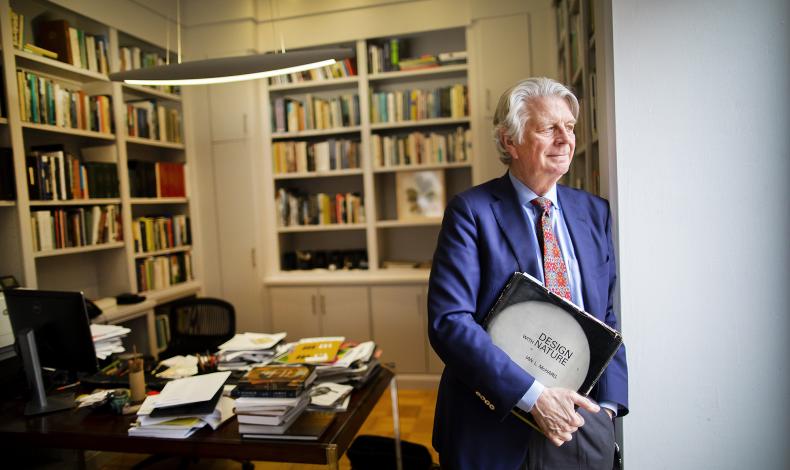48 years ago: PennDesign Dean Fritz Steiner on Earth Day

“Every day is Earth Day for me now; that’s what I do,” says Dean and Paley Professor of Penn’s School of Design, Frederick Steiner. “My work, my life, has been devoted to making the world a better place through an understanding of our environment and how we relate to our built and natural environments.”
It was April 1970, and Frederick Steiner was in the third year of a five-year design program at University of Cincinnati, just an hour south of where he grew up in Dayton.
Having co-founded a student group against pollution, he and a handful of friends decided to organize a campus teach-in as part of a new national environment event.
“Earth Day changed my life,” says Steiner, now dean and Paley Professor of Penn’s School of Design. “It’s so personal to me.”
It was an intense time of student activism—against the Vietnam War, for civil rights, the start of the women’s movement. The environment became part of the organizing.
Steiner’s job for Earth Week, as it was known that first year, was to organize a book fair to go along with the event featuring speakers and concerts.
While researching books on the environment, he discovered there weren’t many. He found about half a dozen to arrange on the table he set up in the student union: Silent Spring by Rachel Carson, A Sand County Almanac by Aldo Leopold, Science and Survival by Barry Commoner.
And Design with Nature by Ian McHarg.
Steiner now has that book on the wall of shelves next to his desk looking out at College Green. The cover—a city skyline silhouetted by the sun on the front and the iconic image of Earth as seen from space on the back—is well-worn, the edges torn from use.
“It was the one book as a design student that clearly appealed to me and I read it and I decided I want to come to the University of Pennsylvania and study design with Ian McHarg,” Steiner says. “Without Earth Day, I don’t know if that would have ever happened.”
Steiner did come to Penn, in 1975, and went on to earn two master’s degrees and a Ph.D. in city and regional planning, studying with McHarg.
“Every day is Earth Day for me now; that’s what I do,” he says. “My work, my life, has been devoted to making the world a better place through an understanding of our environment and how we relate to our built and natural environments.”
Read the full story on Penn Today.

